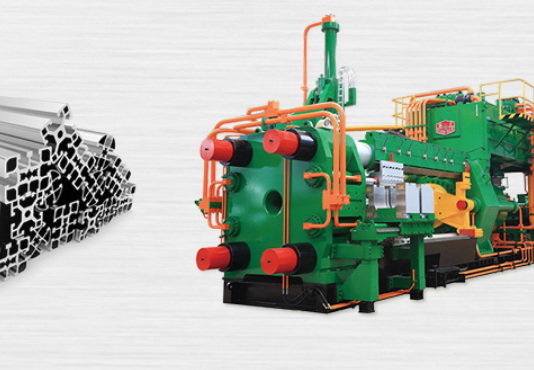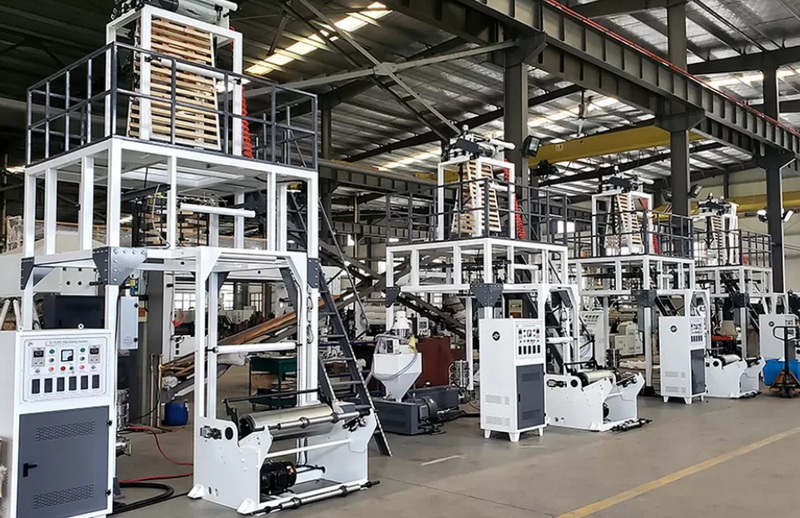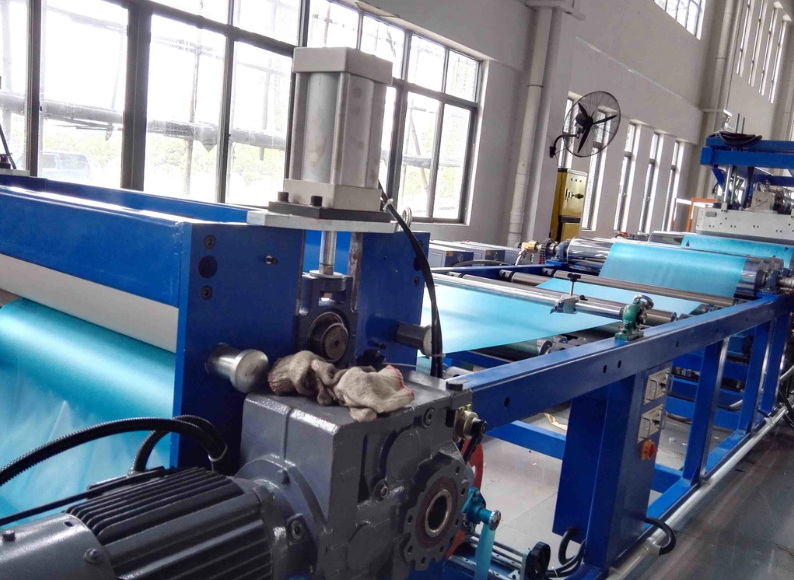Content Menu
● Introduction to Medical Extrusion Equipment
● Core Benefits of Medical Extrusion Equipment
>> Precision and Consistency
>> Efficiency and Scalability
>> Regulatory Compliance and Quality Assurance
>> Material Versatility and Advanced Capabilities
>> Cost-Effectiveness and Waste Reduction
>> Enabling Innovation in Medical Devices
● Key Applications in Healthcare
● The Medical Extrusion Process: Step by Step
● Technological Advances in Medical Extrusion Equipment
● Choosing the Right Medical Extrusion Equipment
● Conclusion
● FAQ
>> 1. What is medical extrusion equipment, and how does it work?
>> 2. What types of materials are commonly used in medical extrusion?
>> 3. What are the primary applications of medical extrusion equipment in healthcare?
>> 4. How does medical extrusion equipment help ensure regulatory compliance and product quality?
>> 5. What recent technological advancements have improved medical extrusion equipment?
● Citations:
Medical extrusion equipment has become a cornerstone of modern healthcare manufacturing, enabling the production of critical components such as catheters, IV lines, surgical drains, and advanced drug-delivery systems. As medical technology advances, the demand for precision, reliability, and efficiency in medical device manufacturing grows ever more urgent. Investing in medical extrusion equipment not only meets these demands but also positions manufacturers at the forefront of innovation, compliance, and patient safety.
This comprehensive article explores the multifaceted benefits of investing in medical extrusion equipment, delves into the core technologies and processes, and answers the most pressing questions for decision-makers in the medical device industry.

Introduction to Medical Extrusion Equipment
Medical extrusion equipment refers to specialized machinery designed to produce precise, high-performance tubing and components for medical applications. The extrusion process involves forcing medical-grade materials—such as silicone, PVC, or polyurethane—through a die to form continuous profiles with exact shapes and dimensions. This technology is essential for manufacturing a wide range of medical devices, from simple tubing to complex, multi-lumen catheters and implantable components[2][5][7].
The significance of medical extrusion equipment lies in its ability to meet the stringent requirements of the healthcare industry, including biocompatibility, durability, and regulatory compliance. As medical procedures become more sophisticated and minimally invasive, the need for reliable, high-quality extruded components continues to rise[1][4][6].
Core Benefits of Medical Extrusion Equipment
Precision and Consistency
One of the most significant advantages of medical extrusion equipment is its capacity for producing components with exceptional precision and consistency. Advanced extruders and dies are engineered to maintain tight tolerances, ensuring that each part meets exact specifications required for medical applications[2][4][5]. This level of accuracy is critical for devices such as catheters, IV lines, and surgical drains, where even minor deviations can impact patient safety and device functionality[6][7].
- Tight Tolerances: Modern extrusion lines can achieve dimensional tolerances as fine as +/- 0.03mm, ensuring reliable performance in clinical settings[8].
- Complex Geometries: The technology allows for the creation of intricate shapes, such as multi-lumen tubing, which is essential for advanced drug delivery and minimally invasive procedures[2][5].
Efficiency and Scalability
Medical extrusion equipment is designed for high-volume production, making it ideal for scaling up manufacturing to meet market demands[2][4][8]. Automated calibration, real-time monitoring, and programmable cutting units streamline the process, reducing manual intervention and minimizing the risk of human error[3][4].
- High Throughput: Continuous extrusion processes enable the rapid production of large quantities of medical tubing and components without sacrificing quality[3][6].
- Automation: Advanced control systems and programmable logic controllers (PLCs) optimize operational parameters, ensuring consistent output and reducing downtime[4][7].
Regulatory Compliance and Quality Assurance
The healthcare industry is governed by strict regulatory standards, including ISO 13485 and FDA requirements. Medical extrusion equipment is purpose-built to facilitate compliance with these regulations through rigorous process controls, traceability, and quality assurance measures[2][5][6].
- Quality Control: Inline dimension control, surface defect detection, and touchless material handling ensure that products meet the highest safety and performance standards[6].
- Traceability: Modern extrusion lines can document every step of the manufacturing process, aiding in regulatory audits and product recalls if necessary[2][5].
Material Versatility and Advanced Capabilities
Medical extrusion equipment supports a wide range of biocompatible materials, including:
- Polyvinyl chloride (PVC)
- Silicone
- Polyurethane
- Thermoplastic elastomers
- Polyethylene and more[2][3][5][6]
This versatility allows manufacturers to select the optimal material for each application, balancing factors such as flexibility, chemical resistance, and sterilizability.
- Multi-Layer and Co-Extrusion: The latest equipment can combine multiple materials in a single extrusion, enabling the production of advanced devices like drug-eluting catheters and multi-lumen tubing[2][5].
- Micro-Extrusion: Innovations in micro-extrusion technology allow for the creation of ultra-fine tubes and profiles, essential for minimally invasive and pediatric devices[2][5].
Cost-Effectiveness and Waste Reduction
Investing in medical extrusion equipment can significantly reduce the total cost of ownership for device manufacturers. The efficiency of the extrusion process minimizes material waste, lowers labor costs through automation, and reduces the likelihood of defects and rework[1][2][3].
- Material Efficiency: Precise control over material usage translates to less scrap and lower raw material costs[3][5].
- Reduced Downtime: Automated systems and real-time monitoring decrease the frequency and duration of production stoppages[4][7].
Enabling Innovation in Medical Devices
Medical extrusion equipment is a driver of innovation in healthcare. By enabling the production of complex, multi-functional components, it opens the door to new device designs and improved patient outcomes[1][5][8].
- Wearable and Implantable Devices: Smaller, lighter, and more functional components are possible, making wearable and implantable medical devices more feasible and effective[1][2].
- Drug-Delivery Systems: Co-extrusion allows for the integration of active pharmaceutical ingredients directly into tubing, supporting advanced drug-delivery technologies[1][5].

Key Applications in Healthcare
Medical extrusion equipment is indispensable across a broad spectrum of healthcare applications, including:
- Catheters: Used for diagnostic and therapeutic procedures, requiring precise dimensions and biocompatibility[2][5].
- IV Lines: Essential for administering fluids and medications directly into the bloodstream[2][4][8].
- Peristaltic Pump Tubing: Ensures accurate fluid movement without contamination[2][4].
- Endotracheal Tubes: Maintains airway patency during surgery or critical care[2][5].
- Dialysis Tubing: Vital for blood filtration in patients with kidney failure[2][4].
- Surgical Drains: Removes fluids from surgical sites to prevent infection and promote healing[2][5].
- Drug-Delivery Devices: Multi-layer and co-extruded tubing enables controlled release and targeted delivery of medications[1][5].
The Medical Extrusion Process: Step by Step
Understanding the medical extrusion process highlights why this technology is so valuable:
1. Material Selection: Medical-grade materials are chosen based on application requirements, focusing on biocompatibility, durability, and regulatory compliance[2][3][5].
2. Material Feeding: The chosen materials are fed into the extruder, where they are heated to a molten state[2][3][7].
3. Melting and Forming: A screw mechanism pushes the molten material through a custom-designed die, shaping it into the desired profile[2][3][7].
4. Calibration and Cooling: The extruded tubing is passed through calibration systems and cooling tanks to stabilize its shape and dimensions[2][4][7].
5. Cutting and Packaging: Automated cutting units ensure precise lengths, after which the tubing is packaged for sterilization and distribution[2][4][8].
Each stage is tightly controlled to ensure consistent quality and compliance with medical standards[6][7].
Technological Advances in Medical Extrusion Equipment
Recent years have seen significant advancements in medical extrusion equipment, further enhancing its benefits:
- Micro-Extrusion: Enables the production of ultra-fine tubing for minimally invasive procedures and pediatric applications[2][5].
- Multi-Layer and Co-Extrusion: Allows for the creation of tubing with multiple lumens or integrated drug-delivery features, expanding device functionality[2][5].
- Integrated Sterilization: Some extrusion lines now include sterilization processes, reducing time-to-market and ensuring product safety[8].
- Smart Manufacturing: Real-time monitoring, data analytics, and Industry 4.0 integration improve process optimization and traceability[4][7].
These innovations not only improve product quality and performance but also enable manufacturers to respond quickly to new market demands and regulatory changes[2][5][8].
Choosing the Right Medical Extrusion Equipment
Selecting the appropriate medical extrusion equipment is crucial for achieving desired outcomes:
- Assess Application Requirements: Consider the types of devices to be produced, required tolerances, and material compatibility[4][8].
- Evaluate Automation and Control Features: Look for equipment with advanced monitoring, programmable settings, and real-time feedback to maximize efficiency and quality[4][7].
- Consider Scalability: Ensure the equipment can handle anticipated production volumes and adapt to future growth[2][4][8].
- Prioritize Regulatory Compliance: Choose equipment designed to meet ISO, FDA, and other relevant standards[2][5][6].
- Seek Technical Support and Customization: Work with manufacturers who offer tailored solutions and ongoing technical assistance[4][8].
Conclusion
Investing in medical extrusion equipment offers a host of compelling benefits for manufacturers in the healthcare sector. From unmatched precision and consistency to scalability, regulatory compliance, and cost-effectiveness, modern extrusion technology is essential for producing the high-quality components that underpin today's medical devices. Its versatility in material selection, capacity for innovation, and ability to meet stringent industry standards make it a foundational investment for any organization aiming to excel in medical device manufacturing.
As medical technology continues to evolve, those who invest in advanced extrusion equipment will be best positioned to deliver safer, more effective, and innovative healthcare solutions—ultimately improving patient outcomes and advancing the field of medicine.

FAQ
1. What is medical extrusion equipment, and how does it work?
Medical extrusion equipment is specialized machinery used to create precise, high-quality tubing and components for medical applications. It works by heating medical-grade materials to a molten state and forcing them through a die to form continuous profiles with specific shapes and dimensions. The process is tightly controlled to ensure consistency and compliance with regulatory standards[2][5][7].
2. What types of materials are commonly used in medical extrusion?
Common materials include polyvinyl chloride (PVC), silicone, polyurethane, thermoplastic elastomers, and polyethylene. These materials are chosen for their biocompatibility, flexibility, durability, and ability to withstand sterilization processes[2][3][5][6].
3. What are the primary applications of medical extrusion equipment in healthcare?
Medical extrusion equipment is used to manufacture a wide range of products, including catheters, IV lines, peristaltic pump tubing, endotracheal tubes, dialysis tubing, surgical drains, and advanced drug-delivery devices[2][4][5][8].
4. How does medical extrusion equipment help ensure regulatory compliance and product quality?
Modern medical extrusion equipment incorporates advanced quality control measures, such as inline dimension monitoring, surface defect detection, and automated process controls. These features ensure that products meet strict regulatory standards like ISO 13485 and FDA requirements, guaranteeing safety and reliability[2][5][6].
5. What recent technological advancements have improved medical extrusion equipment?
Recent innovations include micro-extrusion for ultra-fine tubing, multi-layer and co-extrusion for advanced device functionality, integrated sterilization processes, and smart manufacturing technologies for real-time monitoring and data-driven optimization[2][5][8].
Citations:
[1] https://www.medicaldesignbriefs.com/component/content/article/39646-advanced-extrusion-techniques-how-engineered-extrusion-helps-medical-device-makers-improve-device-designs-and-patient-experiences
[2] https://www.yjing-extrusion.com/what-is-extrusion-machinery-for-medical-applications-and-how-does-it-work.html
[3] https://www.ap-tech.com/what-is-medical-extrusion-2021/
[4] https://www.twinscrew.net/en/article/Medical-Tube-Extrusion-101.html
[5] https://jieyatwinscrew.com/blog/what-is-a-medical-extruder/
[6] https://jbmedical.com.au/how-medical-tubing-extrusion-equipment-meets-stringent-standards/
[7] https://ud-machine.com/blog/what-is-a-medical-extruder/
[8] https://www.twinscrew.net/en/article/medical-tube-extrusion-line.html
[9] https://www.mpo-mag.com/extrusion-40-in-medical-device-manufacturing/
[10] https://www.bausano.com/en/press-and-news/maximising-production-capacity-with-a-minimal-investment
[11] https://www.mddionline.com/ivd/advances-in-od-id-systems-benefit-medical-tubing-extrusion
[12] https://www.starrapid.com/blog/4-benefits-of-plastic-injection-molding-for-medical-products/
[13] https://www.grahamengineering.com/about/ge-connect/benefits-of-integration-and-wet-testing/
[14] https://davis-standard.com/news/davis-standard-llc-the-global-advantage-in-extrusion-converting/
[15] https://www.pearltechinc.com/2025/02/13/extrusion-equipment-blown-film-efficiency/
[16] https://www.macocorporation.com/blog/extruder-machine/
[17] https://www.biospace.com/medical-plastic-extrusion-market-size-to-witness-sustained-growth-throughout-the-forecast-period-2019-2027
[18] https://eldonjames.com/wp-content/uploads/2017/12/MPO_Extruding-Solutions-for-Medtech.pdf
[19] https://metapress.com/medical-tubing-extrusion-and-the-equipment-you-need/
[20] https://www.mpo-mag.com/exceeding-medical-device-extrusion-expectations/
[21] https://seisa.com/capabilities/medical-extrusion/
[22] https://www.jwellextrusions.com/faq/
[23] https://www.conairgroup.com/resources/resource/extrusion-processing-basic-guide-to-auxiliary-equipment/
[24] https://www.grahamengineering.com/about/ge-connect/medical-extrusion-and-common-difficulties-encountered/
[25] https://www.lubrizol.com/-/media/Lubrizol/Health/Literature/LSP-Extrusion-Guide.pdf
[26] https://www.plasticstoday.com/plastics-processing/extrusion-q-a-the-answers-to-your-tough-questions
[27] https://www.hrjextruders.com/article/complete-guide-medical-tube-extruders.html
[28] https://www.bausano.com/en/applications/extrusion-lines-for-medical-sector
[29] https://profileprecisionextrusions.com/5-initial-questions-ask-aluminum-extruder/
[30] https://www.inplexllc.com/blog/plastic-extrusion-faq/
[31] https://crewhr.com/interview-questions/extruding-operators/
[32] https://www.supermacindia.com/blog/medical-tubing-extrusion-and-its-importance-healthcare-industry/
[33] https://www.minalex.com/2021/10/29/10-questions-ask-aluminum-extruder/
[34] https://ir.boyuextruder.com/extruder/5-advantages-plastic-extrusion.html
[35] https://www.longshengmfg.com/extrusion-moulding-understanding-the-process-and-its-benefits/






















